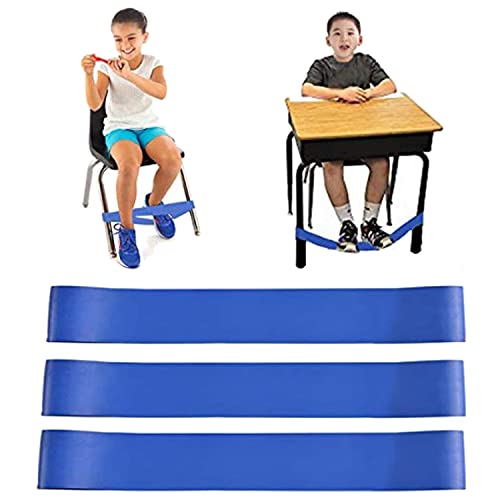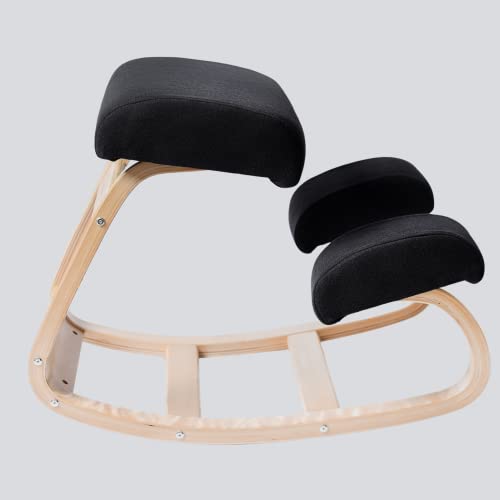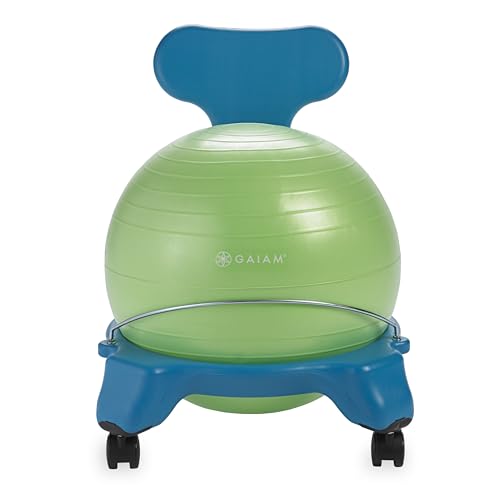When creating an optimal workspace for individuals with ADHD, the significance of a comfortable and supportive desk chair cannot be underestimated. The right chair can make a difference in enhancing focus, reducing restlessness, and promoting overall well-being. This comprehensive guide will explore the essential features and considerations that make a desk chair ideal for individuals with ADHD. Whether you’re a student, a professional, or anyone seeking to maximize productivity, discover the best desk chair solutions tailored to your needs.
Definition of ADHD:
Before choosing the best desk chair for ADHD, let’s first understand the nature of Attention Deficit Hyperactivity Disorder (ADHD). ADHD is a neurodevelopmental disorder characterized by persistent inattention, hyperactivity, and impulsivity that significantly impairs daily functioning.
Individuals with ADHD may struggle with maintaining focus, organizing tasks, and regulating their impulses, which can affect various aspects of their lives, including work, education, and personal relationships.
Warning: unserialize(): Error at offset 314 of 1347 bytes in /home/newhopepsychology/public_html/wp-content/plugins/aawp/includes/product-helper-functions.php on line 135
Symptoms of ADHD:
ADHD manifests in various ways, with three primary subtypes: hyperactive-impulsive, inattentive, and combined. The hyperactive-impulsive subtype involves restlessness, fidgeting, difficulty staying seated, impulsive decision-making, and interrupting conversations.
The inattentive subtype showcases symptoms like forgetfulness, trouble following instructions, losing track of details, and struggling to complete tasks. The combined subtype presents a blend of both hyperactive-impulsive and inattentive symptoms.
These symptoms undermine an individual’s ability to focus, stay organized, and manage time effectively. Addressing these symptoms is crucial for enhancing daily functioning and improving life quality. By creating an environment that supports focus and comfort, such as choosing an appropriate desk chair, individuals with ADHD can take meaningful steps towards managing their symptoms and thriving in their endeavors.
Benefits of an Active Chair for ADHD:
As we explore optimizing workspaces for individuals with ADHD, we must recognize the incredible benefits that active chairs can bring. These innovative seating solutions go beyond traditional chairs, providing a dynamic approach to addressing the unique needs of individuals with ADHD.
Improved Posture and Core Strength:
For individuals with ADHD, maintaining proper posture and core strength is paramount. Active chairs offer a solution by encouraging natural movement and engaging core muscles. These chairs often boast ergonomic designs and adjustable heights, promoting a comfortable sitting position that aligns the spine.
Enhancing posture and core strength, active chairs help individuals combat restlessness and boost focused productivity, ultimately improving overall well-being.
Sensory Input and Stimulation:
Sensory input plays a crucial role in managing ADHD symptoms. Active chairs offer a range of sensory seating options, including stability balls, wobble chairs, and meditation chairs.
These chairs provide the sensory stimulation individuals with ADHD often seek, allowing them to channel their excess energy productively. By satisfying the need for movement and fidgeting, these chairs support attention and reduce hyperactivity, creating a conducive environment for improved focus.
Extended Periods of Concentration:
Extended periods of concentration can be challenging for individuals with ADHD, as sitting still for too long can hinder blood flow and impact executive functioning skills. Active chairs come to the rescue by promoting movement and dynamic sitting.
The benefits of using functional chairs for ADHD are manifold, including increased engagement, reduced restlessness, improved body awareness, and enhanced sensory input. By facilitating movement, these chairs alleviate the discomfort associated with prolonged sitting and foster an environment conducive to sustained focus and attention.
Incorporating active chairs into your workspace can revolutionize how individuals with ADHD approach tasks, providing a platform that aligns with their unique needs and fosters a productive and comfortable environment.
Types of Active Chairs for ADHD:
In the pursuit of creating an environment tailored to the needs of individuals with ADHD, a diverse range of active seating options presents itself as a promising solution. These chairs go beyond traditional static seating, offering dynamic movement and sensory engagement to enhance focus and comfort.
The selection is abundant and purposeful, from wobble chairs and stools to wiggle seats, cushions, and ergonomic office designs. Let’s explore these options to find the perfect match for ADHD individuals seeking a more productive and engaging workspace.
Wobble Chairs and Stools:
Wobble chairs and stools have emerged as a dynamic seating choice, especially in flexible seating classrooms. These chairs encourage subtle movements, such as rocking and swaying, which engage the core muscles and provide sensory input.
Popular options like the Kore Wobble Chair and Hokki Stool for elementary school students offer ergonomic support while allowing movement. Teenagers can benefit from the Teen Kore Wobble Stool, designed with an adjustable height feature to cater to their growing needs. For those seeking relief from back pain, the Pettibon System Therapeutic Wobble Chair is a specialized solution that offers comfort and therapeutic benefits.
Wiggle Seats and Cushions:
Wiggle seats and cushions provide an innovative solution to address the needs of individuals with ADHD. These active seating options offer sensory input and promote controlled movement, helping individuals regulate their emotions and channel their energy constructively.
Wobble and sensory cushions are versatile choices that can be placed on traditional chairs, transforming them into dynamic seats that enhance focus and engagement. These options benefit individuals who benefit from tactile Stimulation and an emotional seating experience.
Ergonomic Designs with Affiliate Links:
In office environments, ergonomic designs take center stage, catering to individuals with ADHD who seek optimal comfort and focus during work hours. These chairs are thoughtfully crafted with adjustable armrests, lumbar support, height adjustability, and materials that offer breathability and durability.
Not only do these design elements promote proper posture and reduce physical discomfort, but they also address distractions and restlessness associated with ADHD. To explore these ergonomic wonders, we’ve curated a list of affiliate links to guide you toward a productive and comfortable workspace that aligns with your unique needs.
Incorporating active chairs into various settings, from classrooms to offices, can transform how individuals with ADHD interact with their surroundings. Whether through subtle movements, sensory engagement, or ergonomic designs, these chairs empower individuals to navigate challenges while embracing a more engaged and focused approach to their tasks.
Pros & Cons of Active Chairs for ADHD:
Active chairs have gained prominence as innovative solutions to address the unique challenges faced by individuals with ADHD. However, like any other tool, they come with their own set of advantages and considerations. Let’s delve into the pros and cons of using active chairs for individuals with ADHD.
Pros:
1. Enhanced Focus and Engagement:
Active chairs promote movement and sensory input, helping individuals with ADHD channel their excess energy in a controlled manner. This can lead to increased engagement and improved focus on tasks, as the dynamic nature of these chairs caters to their need for movement.
2. Core Strength and Posture Improvement:
Many active chairs encourage dynamic sitting, which engages core muscles and improves posture. This can positively impact overall body awareness and support individuals in maintaining better alignment while seated.
3. Sensory Stimulation:
For individuals with ADHD who benefit from sensory input, active chairs offer textured surfaces, wobbling bases, and other features that provide tactile and proprioceptive Stimulation. This sensory engagement can help regulate emotions and enhance attention.
4. Variability in Seating Experience:
Active chairs provide a variety of seating experiences, allowing users to switch between rocking, bouncing, and other movements. This variability can prevent monotony, reduce restlessness, and maintain a higher level of interest during tasks.
Cons:
1. Distraction Potential:
While movement can be beneficial, it might also lead to distraction in some cases. Excessive activity or fidgeting might divert attention from the task at hand, especially in environments where focus is crucial, such as exams or meetings.
2. Learning Curve:
Using active chairs effectively requires an adjustment period. Users must learn to balance and move on these chairs without losing focus or disrupting their tasks. This learning curve could impact immediate productivity.
3. Compatibility with Environment:
In certain settings, such as traditional classrooms or formal office spaces, using active chairs might not be well-received or feasible due to the need for standardized seating arrangements.
4. Individual Preferences and Tolerance:
Not all individuals with ADHD may find active chairs comfortable or suitable for their needs. Some might prefer a more stable seating option, and others might not tolerate the movement well due to sensory sensitivities.
Active chairs can offer a range of benefits for individuals with ADHD, from improved focus to enhanced sensory input. However, the decision to use such chairs should be made based on individual preferences, task requirements, and the environment in which they’ll be used. It’s essential to balance the advantages of movement and the potential challenges to ensure that active chairs effectively support the needs of individuals with ADHD.
Conclusion:
Selecting the best desk chair for ADHD is a transformative step toward creating an environment that fosters concentration, comfort, and overall productivity. By prioritizing features such as ergonomic design, adjustability, and sensory-friendly materials, individuals with ADHD can curate a workspace that aligns with their unique needs. Remember that investing in a high-quality desk chair isn’t just about furnishing a space – it’s about investing in your cognitive well-being and setting the stage for success. So, take the time to evaluate your options, consider your preferences, and embark on a journey toward a more focused and comfortable work or study experience. Your chair is more than just a piece of furniture; it’s your partner in productivity and growth.
Last update on 2025-12-17 / Affiliate links / Images from Amazon Product Advertising API










